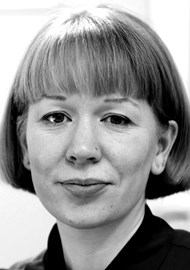Swallowing disorders in children are increasingly common due to advances in medical care allowing them to survive prematurity or complex health conditions. Careful assessment of eating and drinking is necessary to ensure that children are managed both safely and with the least restrictions to diet possible. Video fluoroscopic swallow studies (VFSS) and flexible endoscopic evaluation of swallowing (FEES) are two instrumental procedures that can help to evaluate swallowing biomechanics and safety as well as identify the cause of any potential dysphagia. VFSS is a radiological assessment of swallowing using barium to analyse swallowing fluoroscopically. It has been used in the paediatric population since 1983. FEES was first used in children in 1993 and requires a flexible nasendoscope to be placed and positioned in the hypopharynx to assess eating and drinking in real time. In both assessments multiple consistencies of diet and fluids can be assessed, as can manouevres and exercises. VFSS and FEES both have different benefits and limitations, including a gestalt view of all swallowing stages in VFSS, and direct view of laryngeal anatomy and secretions in FEES. In many patients, VFSS and FEES can be used together to guide management, with FEES offering more repeatability due to the absence of radiation risk, as well as the option of use in breastfeeding infants. Current evidence comparing the results of paediatric VFSS and FEES is limited to a small number of comparison studies with small sample sizes and methodological limitations. These studies show poor to moderate agreement between VFSS and FEES with concerns that FEES has lower sensitivity for diagnosis of aspiration. However, the authors of this review acknowledge that further prospective research studies are required to make clearer recommendations, and that the pragmatics of a clinical case and setting are likely to guide decision making at this time.
Choosing instrumental assessments of swallowing for children
Reviewed by Gemma Clunie
Videofluoroscopic swallow study and fiberoptic endoscopic evaluation of swallow, which is superior?
CONTRIBUTOR
Gemma Clunie
BA (Hon), MSc, PhD, MRCSLT, Imperial College Healthcare NHS Trust; Honorary Research Fellow, Imperial College London, UK.
View Full Profile



